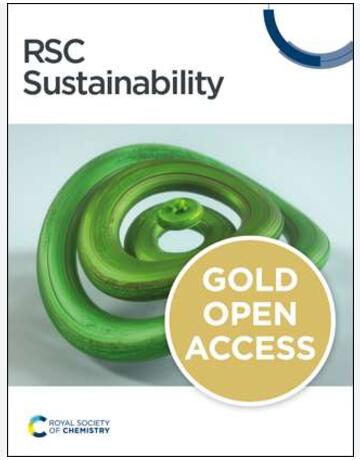Evaluation of Environmental Impacts in Legume Crops: A Case Study of PGI White Bean Production in Southern Europe
IF 3.3
3区 环境科学与生态学
Q2 ENVIRONMENTAL SCIENCES
引用次数: 0
Abstract
A small-scale organic crop producing the protected geographical indication (PGI) cultivar “Faba Asturiana”, located in northern Spain, was considered to be a case study for analyzing the environmental impacts associated with the production of this legume (Phaseolus vulgaris L.). The life cycle assessment (LCA) methodology was employed for the analysis with a “cradle-to-gate” perspective, with 1 kg of dry beans as the functional unit. The results demonstrated that the main contributor to the environmental impacts was electricity consumption (with percentages above 75% for ionizing radiation, freshwater eutrophication, terrestrial ecotoxicity, and non-carcinogenic toxicity). A carbon footprint (CF) of 1.20 kg CO2eq per kg of dry beans was obtained (around 1000 kg CO2/ha·y). Electricity consumption was the major contributor to the CF, followed by atmospheric emissions from waste incineration and diesel use. Furthermore, some environmental improvements were suggested, and three alternative scenarios were investigated. In conclusion, it can be established that the CF of the studied PGI bean is within the range reported by other researchers for leguminous crops. The easiest way to reduce the CF for this particular crop would be to compost the organic waste instead of burning it. Additionally, the most effective strategy would be to reduce energy consumption or use renewable energy sources. For example, if the energy supply were obtained through in situ solar production, the CF could be reduced by more than 40%.豆类作物的环境影响评估:南欧 PGI 白豆生产案例研究
位于西班牙北部的一种生产地理标志保护品种 "Faba Asturiana "的小规模有机作物被视为分析与这种豆类(Phaseolus vulgaris L.)生产相关的环境影响的案例研究。分析采用了生命周期评估(LCA)方法,以 1 公斤干豆为功能单位,从 "摇篮到门 "的角度进行分析。结果表明,对环境造成影响的主要因素是电力消耗(电离辐射、淡水富营养化、陆地生态毒性和非致癌毒性的百分比均超过 75%)。每千克干豆的碳足迹(CF)为 1.20 千克二氧化碳当量(约 1000 千克二氧化碳/公顷-年)。碳足迹的主要来源是电力消耗,其次是废物焚烧和柴油使用产生的大气排放。此外,还提出了一些环境改进建议,并研究了三种备选方案。总之,可以确定所研究的 PGI 大豆的 CF 值在其他研究人员报告的豆科作物 CF 值范围之内。要降低这种特殊作物的 CF 值,最简单的方法是堆肥而不是焚烧有机废物。此外,最有效的策略是减少能源消耗或使用可再生能源。例如,如果通过就地太阳能生产获得能源供应,CF 可减少 40% 以上。
本文章由计算机程序翻译,如有差异,请以英文原文为准。
求助全文
约1分钟内获得全文
求助全文
来源期刊

Sustainability
ENVIRONMENTAL SCIENCES-ENVIRONMENTAL SCIENCES
CiteScore
6.80
自引率
20.50%
发文量
14120
审稿时长
17.72 days
期刊介绍:
Sustainability (ISSN 2071-1050) is an international and cross-disciplinary scholarly, open access journal of environmental, cultural, economic and social sustainability of human beings, which provides an advanced forum for studies related to sustainability and sustainable development. It publishes reviews, regular research papers, communications and short notes, and there is no restriction on the length of the papers. Our aim is to encourage scientists to publish their experimental and theoretical research relating to natural sciences, social sciences and humanities in as much detail as possible in order to promote scientific predictions and impact assessments of global change and development. Full experimental and methodical details must be provided so that the results can be reproduced.
 求助内容:
求助内容: 应助结果提醒方式:
应助结果提醒方式:


